The Philips PUS8079 is the brand's most affordable model featuring the multicoloured Ambilight backlighting, which has a dedicated fanbase. Given its budget price, this is a significant advantage. However, with a lower budget, certain compromises are to be expected. This TV is particularly suited for those who primarily watch content during the day. The main drawback is the contrast, which for a VA panel is quite low, and the luminance hovers around 200 nits, making it unsuitable for high-quality HDR content. However, there are notable positives. The tonal fidelity is relatively high, especially for content within the TV's capabilities, and the smooth gradation is impressive—hard to criticise. For casual gaming, low input lag is a plus. The operating system, though simple and sufficient for basic streaming like YouTube and Netflix, may fall short for users requiring more functionality. In conclusion, the Philips PUS8079 is ideal for those seeking an affordable TV with Ambilight, especially for daytime viewing, but may not be the best choice for high-end content or those seeking a more robust OS.
- Matching (Score)
- Our verdict
- TV appearance
- Where to buy
- Contrast and black detail
- HDR effect quality
- Factory color reproduction
- Color reproduction after calibration
- Smoothness of tonal transitions
- Image scaling and smoothness of tonal transitions
- Blur and motion smoothness
- Console compatibility and gaming features
- Input lag
- Compatibility with PC
- Viewing angles
- TV efficiency during daytime
- Details about the matrix
- TV features
- Apps
- Playing files from USB
- Sound
Philips PUS8079 vs Samsung U8000F (IPS)
Direct compare
Check the best price offer:
Samsung U8000F (IPS)U8000F / U8092F
Available screen sizes: 55”

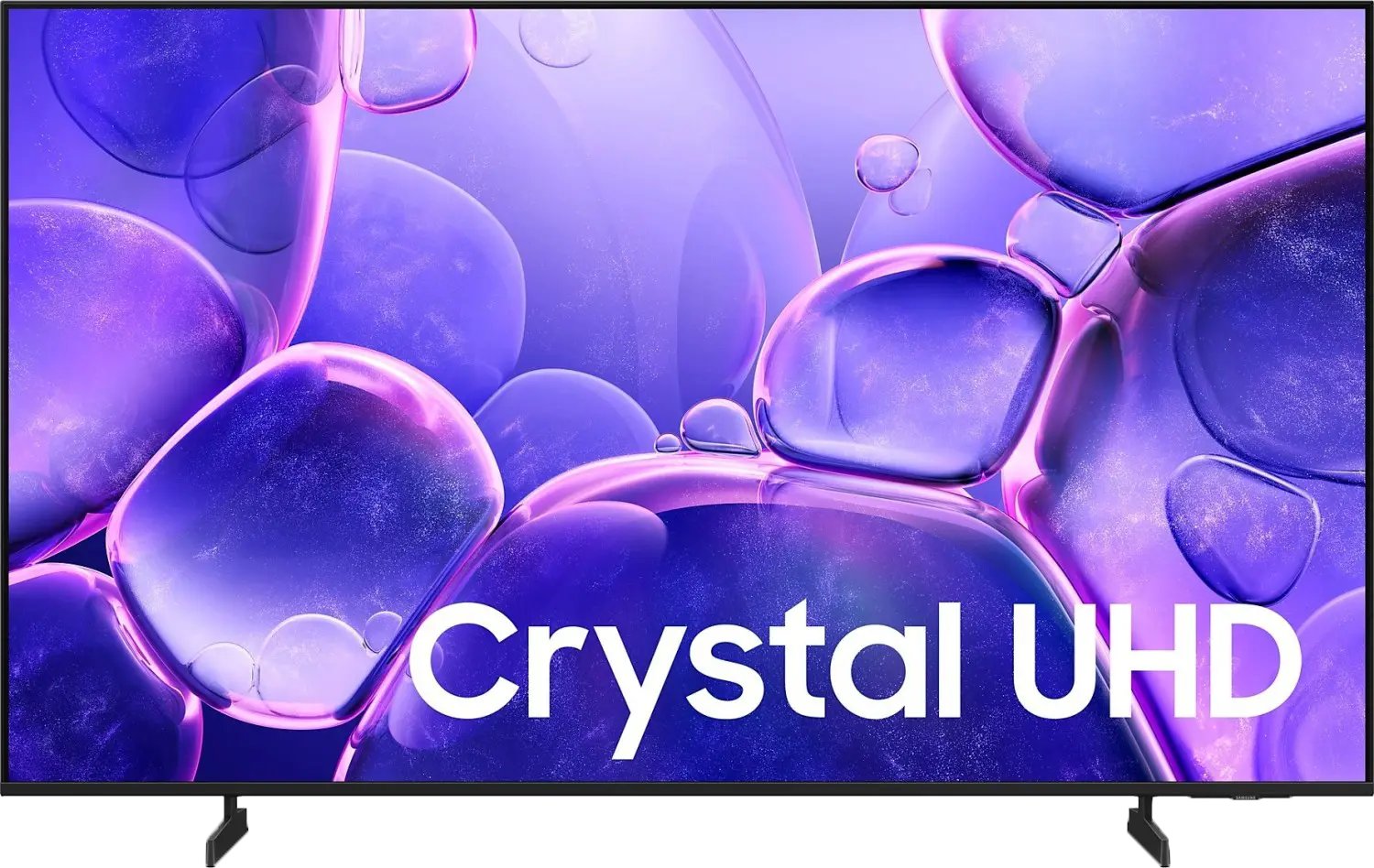
Panel type: LCD VA
Resolution: 3840x2160
System: Titan OS
Model year: 2024
Complete the survey to find out the result

Panel type: LCD IPS
Resolution: 3840x2160
System: Tizen
Model year: 2025
Complete the survey to find out the result

Overall rating
4.6
5.3
Movies and series in UHD quality
4.3
4.8
Classic TV, YouTube
4.9
4.8
Sports broadcasts (TV and apps)
4.5
5.8
Gaming on console
6.2
6.3
TV as a computer monitor
2.0
6.0
Watching in bright light
2.6
3.4
Utility functions
5.0
5.6
Apps
7.0
8.3
Sound quality
5.1
5.7
Complete the survey to find out what fits your preferences
Advantages
Unique Ambilight system
Great fluidity of tonal transitions
Low input lag values
Good built-in file player
Support for DTS audio
Advanced Smart system: Tizen
Good viewing angles (IPS Matrix)
Great for text work - displays fonts excellently
Low input lag
Basic features for gamers - VRR and ALLM
Disadvantages
Low display brightness
Missing Dolby Vision
IR remote - requires aiming at the screen
TitanOs system - limited number of applications
Low brightness
Very poor black and contrast (IPS panel)
Worse appearance than its predecessor
Infrared remote
Our verdict
The U8000F is a very basic television that may find its buyers among those looking for the cheapest Samsung 4K with Smart TV. And that is exactly its purpose. Thanks to the Tizen system, this model really offers quite a lot in terms of smart features – the number of applications and possibilities may attract those who want a reasonably intelligent device at the lowest possible price. In terms of picture quality – it is average, which is not surprising in this class. Nevertheless, a few pluses can be found: fairly good viewing angles will work well for traditional TV watching from different parts of the room, and the basic features for gamers (like VRR and ALLM) may be sufficient for typical "Sunday" gamers. The PC mode also deserves a plus – the television handles displaying fonts very well, so it can also serve as a cheap monitor. Of course, this is not a model that can be recommended to everyone "sight unseen." But if someone is looking for an affordable Samsung with a 4K resolution and a solid Smart system, then the U8000F is just that kind of device.
TV appearance





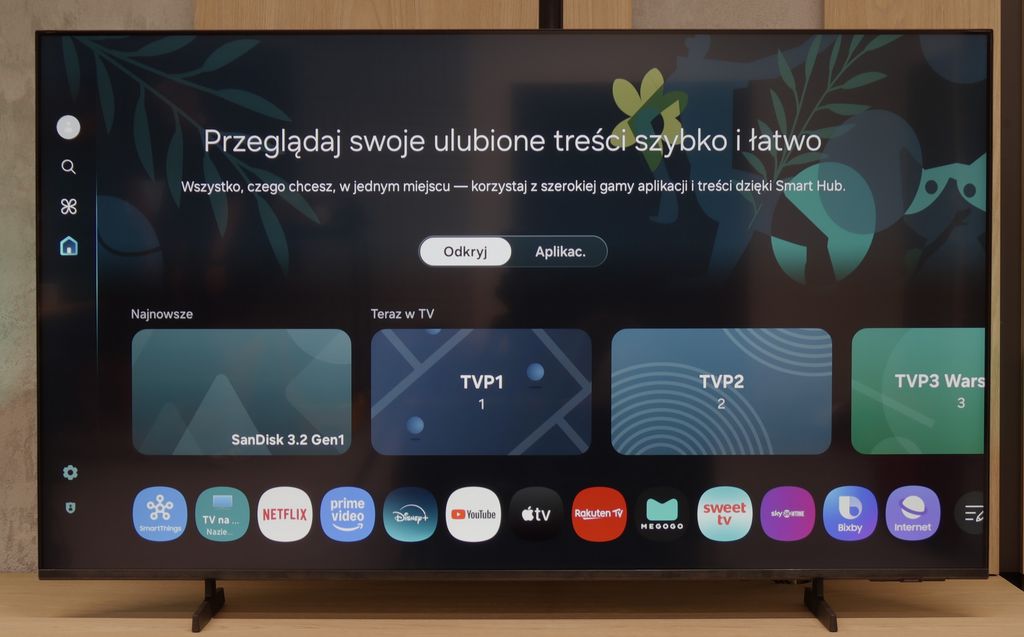
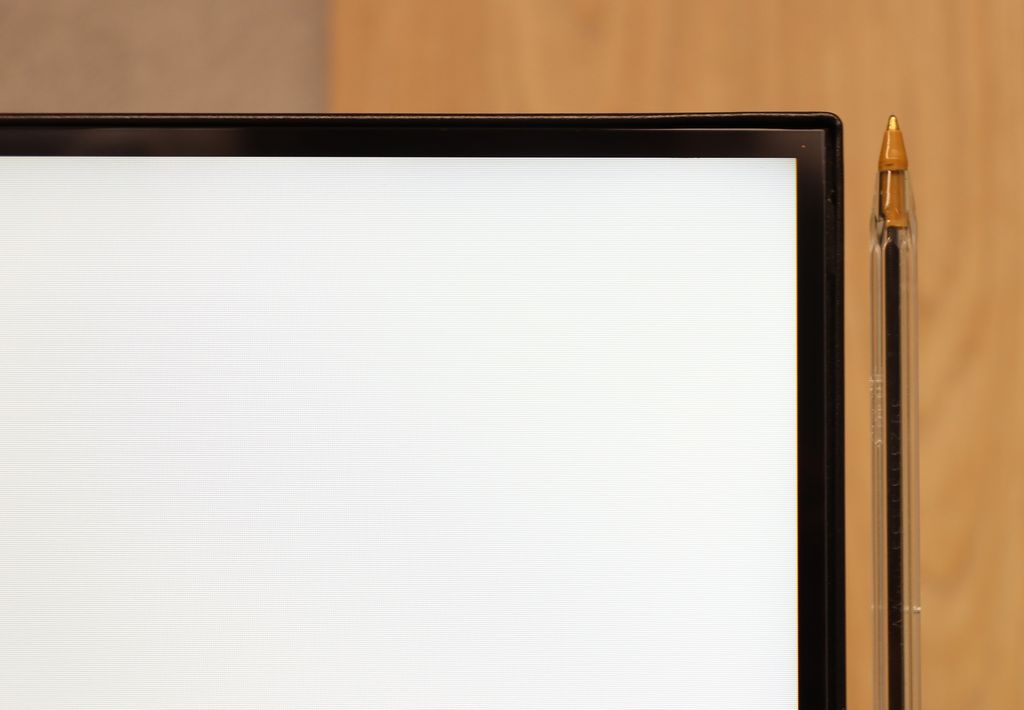

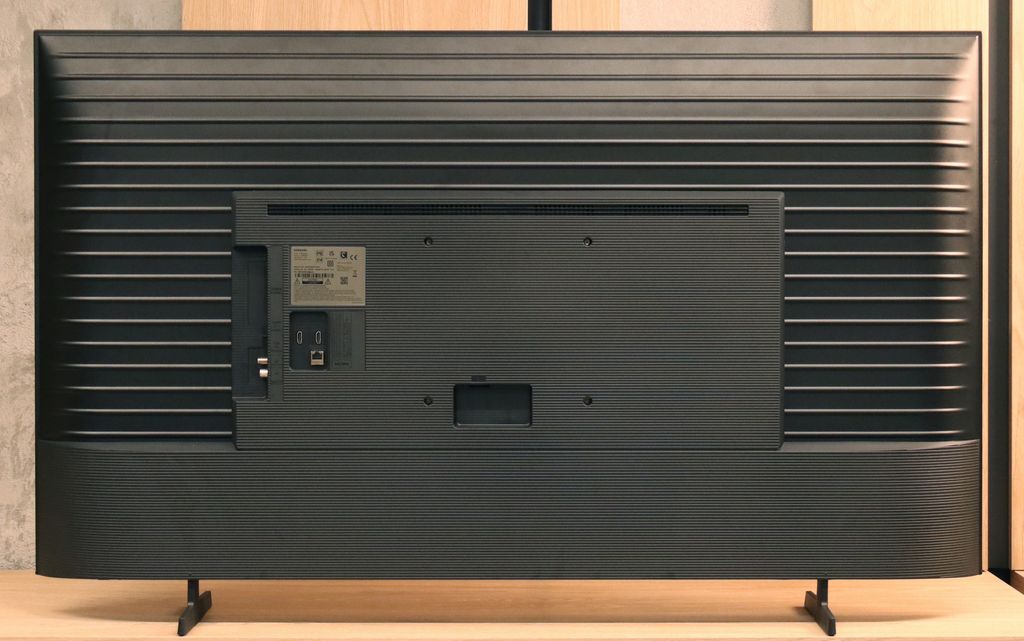
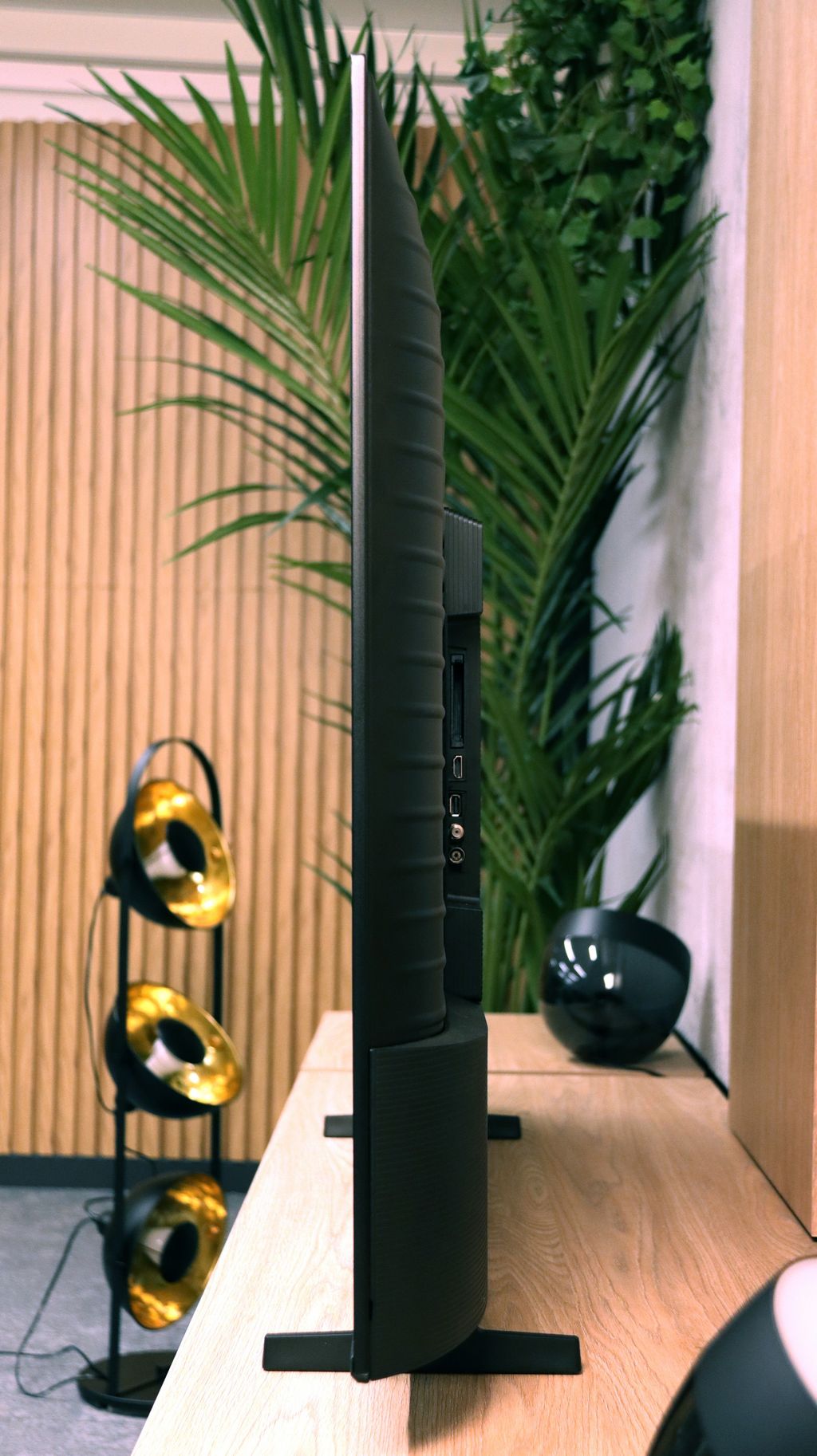
Contrast and black detail
4.3/10
1.1/10
Local dimming function: No
Local dimming function: No
Contrast:

Result
2,750:1

Result
2,550:1

Result
2,150:1

Result
2,350:1

Result
2,350:1

Result
900:1

Result
800:1

Result
700:1

Result
700:1

Result
650:1
Halo effect and black detail visibility:

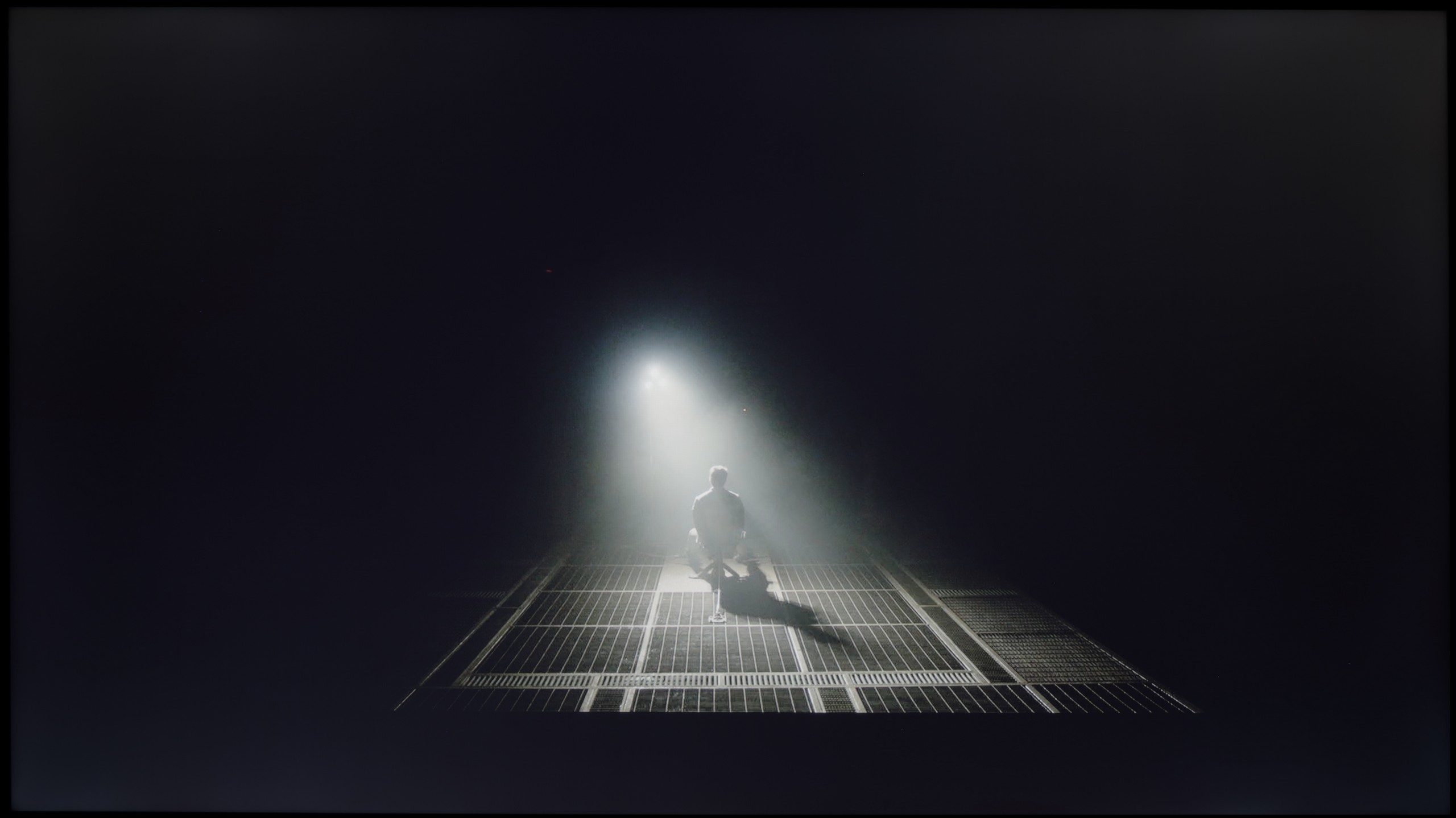
The Philips PUS8079 is equipped with a VA panel, and the size tested was 43". It's important to note that the manufacturer may change the panel type depending on the screen size. While a VA panel typically provides good black levels, the performance here is predictable given the TV's budget price. With a contrast ratio of around 2300:1, this is one of the lowest results for a VA panel, as more advanced units can achieve 2-3 times better results in this regard. As expected for such an affordable device, the backlighting is direct (Direct), offering uniform illumination but lacking zone division, which is typical for low-end models. One positive point is the light separation observed in the test with the movie "Oblivion." However, this advantage fades when watching "Revenant," where the picture quality drastically drops, leaving the scene looking flat and disappointing. Ultimately, while the Philips PUS8079 offers basic features for its price, it falls short of being a viable option for home cinema enthusiasts.
The Samsung U8000F, more specifically the U8092F model in the 55-inch version, is equipped with an IPS panel. Let's be honest – this is not the best choice when it comes to displaying blacks and contrast correctly. The results in this category are just poor. The contrast is abysmal, and watching dark scenes with any kind of "cinematic" effect is nearly impossible. Additionally, the fact that the television lacks local dimming doesn’t help, making it hard to achieve better results. The only thing that deserves praise is the fairly decent uniformity of the panel – but that's more of a small consolation. Overall, it's not good. If you care about deep blacks and reasonable contrast, it's definitely better to go for the variant with a VA panel, which performs significantly better in this particular series.
HDR effect quality
2.7/10
2.7/10
Luminance measurements in HDR:

Result
179 nit

Result
177 nit

Result
202 nit

Result
164 nit

Result
193 nit

Result
191 nit

Result
224 nit

Result
241 nit

Result
79 nit

Result
234 nit
Scene from the movie “Pan” (about 2800 nits)


Scene from the movie “Billy Lynn” (about 1100 nits)


Static HDR10


Dynamic: HDR10+
Dynamic: HDR10+


HDR luminance chart:
Samsung U8000F (IPS)
Luminancja HDR
Luminance of RGB colors
Philips PUS8079
Luminancja HDR
Luminance of RGB colors
The Philips PUS8079 has a maximum brightness of just 202 nits in content with a wide tonal range, which is very low and makes it unsuitable for streaming movies and series in the highest quality. Additionally, using HDR with dynamic metadata doesn’t improve the situation, as the only HDR format available on this model is HDR10+, which is rare and has limited content support. The TV also uses WLED backlighting, which is not optimal and results in only 80% coverage of the DCI-P3 wide colour gamut. This limits the intensity of colours in HDR content.
Better does not mean good – and that perfectly summarizes the capabilities of the U8092F when it comes to displaying bright movie scenes in HDR mode. The brightness of the panel is just under 250 nits, which is definitely too little to enjoy any lighting effects. An interesting situation was noted during the measurement of the fourth scene from the movie Sicario 2 – the television clearly dimmed the entire screen in an attempt to achieve better black levels (which are still weak). One could even suggest that the device uses some form of "global dimming," but unfortunately, the results are still very poor. To make matters worse, the television does not support a wide color gamut – the coverage of the DCI-P3 space is about 80%, so there’s no hope for truly vibrant colors. HDR images here look rather like lightly brightened SDR, and that's the form we would suggest sticking to when it comes to this television.
Factory color reproduction
1.8/10
6.5/10


Factory Mode
After calibration
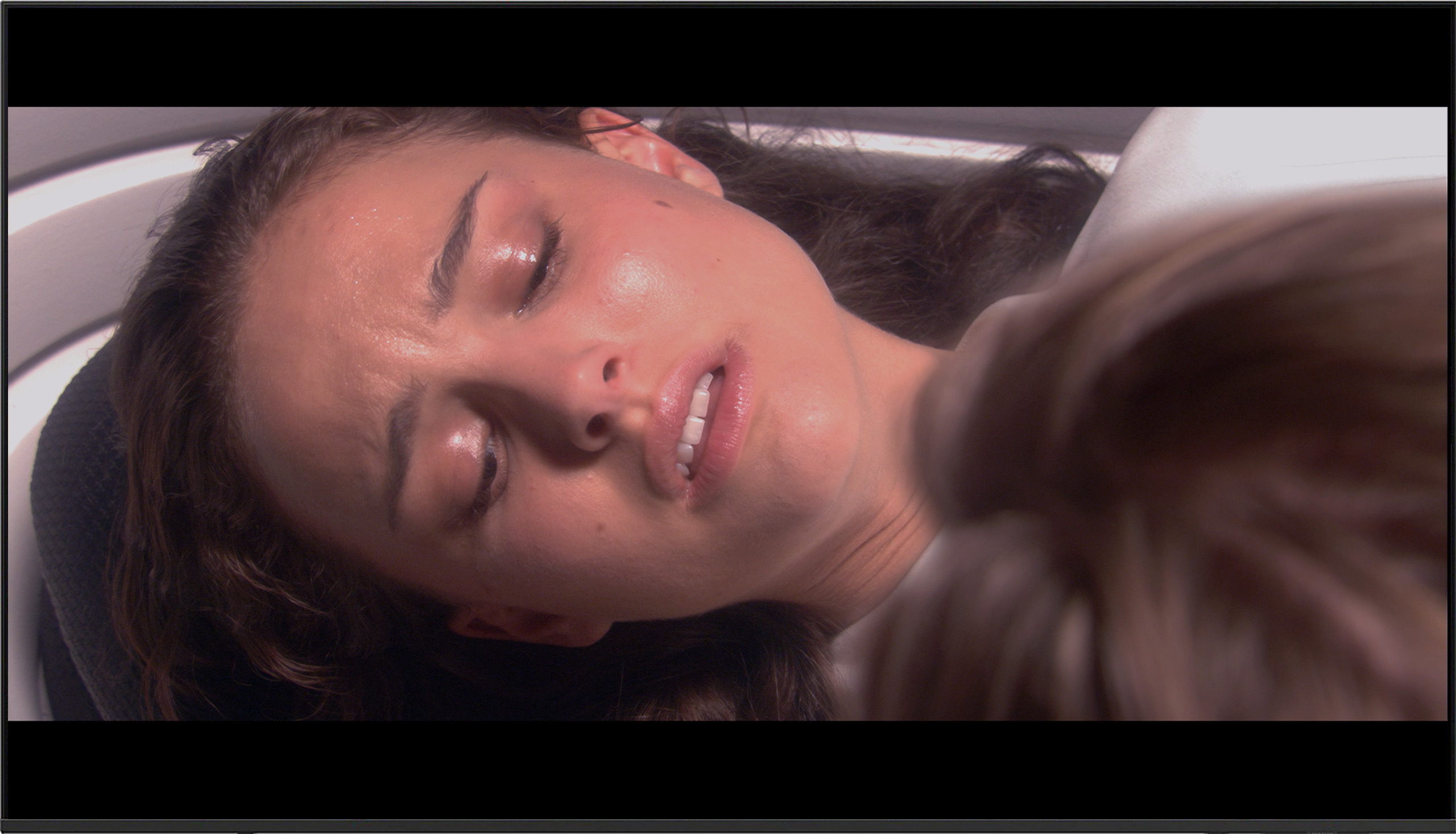
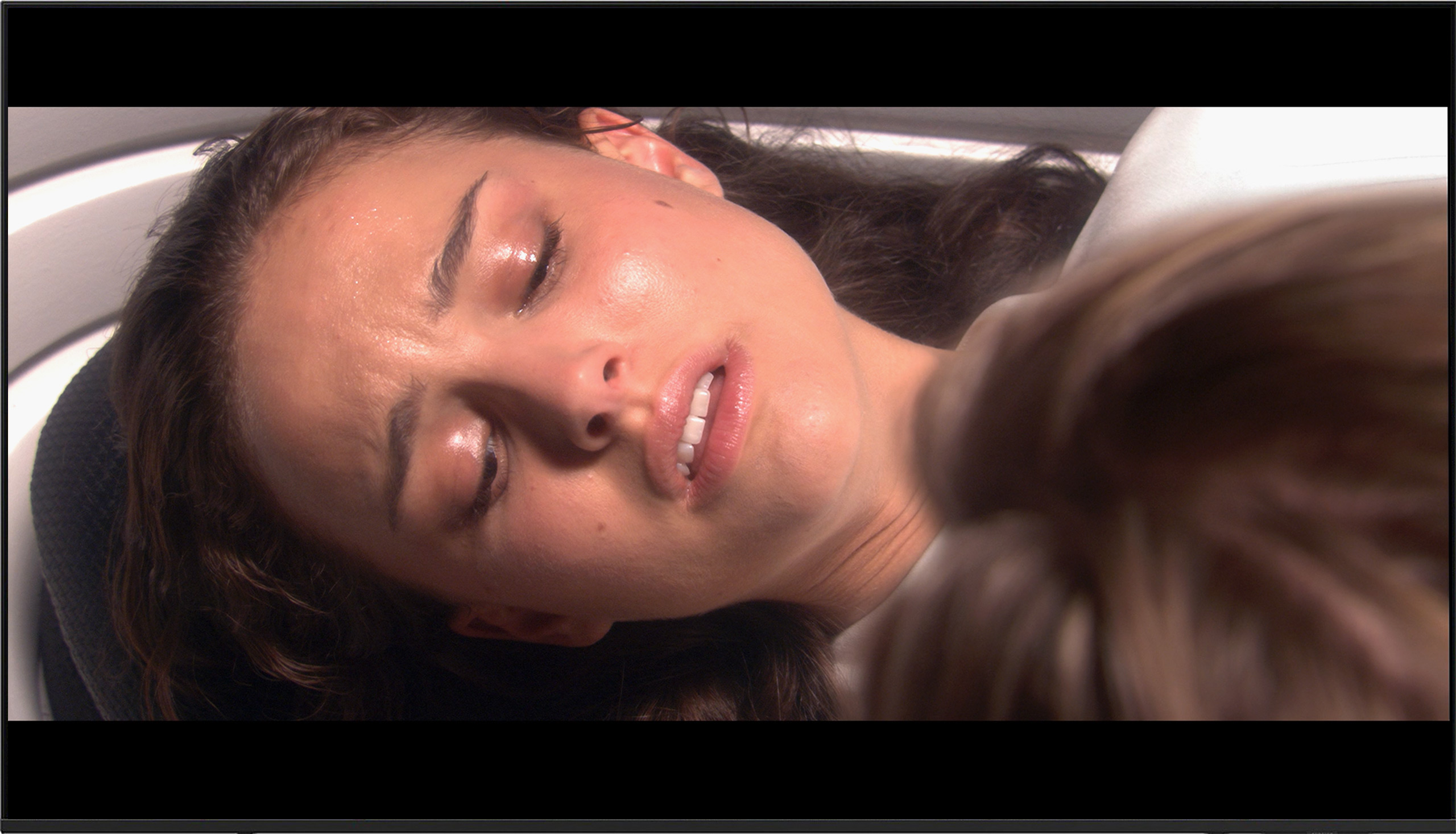
Factory Mode
After calibration
The best factory mode for colour reproduction and fidelity to the director's vision on the Philips PUS8079 was the "Film" mode. However, this setting displayed significant discrepancies between the filmmaker's intent and the actual output. In both SDR and HDR materials (with HDR being less affected), the white balance was off, showing a blue tint similar to store displays, rather than pure whites. When it came to SDR materials, gamma was notably lowered, cutting into the already limited contrast and brightening the overall image. The EOTF curve in HDR content also showed a significant drop below the reference line, making HDR materials appear even darker. The colour accuracy in both SDR and HDR modes was poor, with high deltaE values indicating that the colours were far from their intended representation.
The Samsung U8000F was tested in the best possible picture mode built into the TV, which is Filmmaker Mode. This mode should – at least in theory – offer a cinematic, reference-quality image without unnecessary enhancements. For SDR content (mainly HD/SD), the TV performed surprisingly well straight out of the box. White balance errors hovered around a value of 3, which is roughly at the threshold of perception. The only complaint could be about brightness management – the gamma chart showed a slight tendency to brighten or darken certain areas, but overall it performed quite well for this price segment.
Unfortunately, it looks much worse in HDR mode. Although the white balance wasn't terrible, the TV had significant color errors – particularly noticeable on the Color Checker chart, where almost every sample landed outside the target point. The HDR image simply looks unnatural, and colors can be shifted, dull, or too cool. This largely stems from the fact that the U8000F does not support a wide color gamut (DCI-P3). The TV is physically incapable of displaying accurate colors in HDR standard – and this unfortunately shows in every more demanding material.
Color reproduction after calibration
4.8/10
7.5/10




Fortunately, Philips incorporates advanced image correction tools across its televisions. SDR content benefited the most from these adjustments, with significant improvements in deltaE errors, white balance, and gamma. While the image still isn’t perfect, it is much more watchable, making it easier on the eyes during movie or series viewing. HDR content, however, was more challenging due to the television’s low luminance. While the EOTF curve and white balance improved, the corrections weren’t as effective as with SDR materials. It’s important to note that each unit may have different errors, some larger and some smaller, but the adjustments made were a step in the right direction.
Although the U8000F offered quite a decent picture in SDR right out of the box, we were able to adjust it a little more. We managed to eliminate a slightly purplish tint and calibrate the gamma to a more reasonable level. However, the television still tends to overemphasize the smallest and brightest parts of the image – the gamma chart shows a characteristic "dip" that is difficult to completely correct.
Unfortunately, the situation looks worse in HDR. It's hard to talk about any significant improvement here – the television is simply not designed for HDR content. We tried to adjust the picture in the advanced settings, but despite everything, the color errors remained quite large – a delta E above 7 indicates noticeable deviations. It's a bit of a shame, but that's the charm of a budget design. In SDR, the U8000F performs just fine, while HDR is simply not its league.
Smoothness of tonal transitions
7.5/10
9/10












The tested television excels in the smoothness of tonal transitions, performing admirably in nearly every scene. While there are slight shortcomings in darker areas, particularly near blacks, the overall performance remains impressive, especially considering the device’s affordability.
One noticeable drawback, however, is the visible backlight bleed in the corners, a common issue with panels in budget-friendly models. Despite this, the television’s strong performance in tonal transitions significantly outweighs this minor flaw, making it a compelling option for its price range.
Another important thing to pay attention to when assessing image quality is the smoothness of tonal transitions – that is, how well the television handles blending colors and shades. Here, the Samsung U8092F performs... almost perfectly. On the tested screens, there are no visible banding issues, no problems with color gradients, and the overall image is not artificially sharpened, which unfortunately happens in many televisions of this class. The image looks natural and very clean. We noticed minimal issues with the brightest scenes, but that’s more of nitpicking that only a very discerning eye would catch.
Image scaling and smoothness of tonal transitions
6.3/10
5/10
Smooth transition function

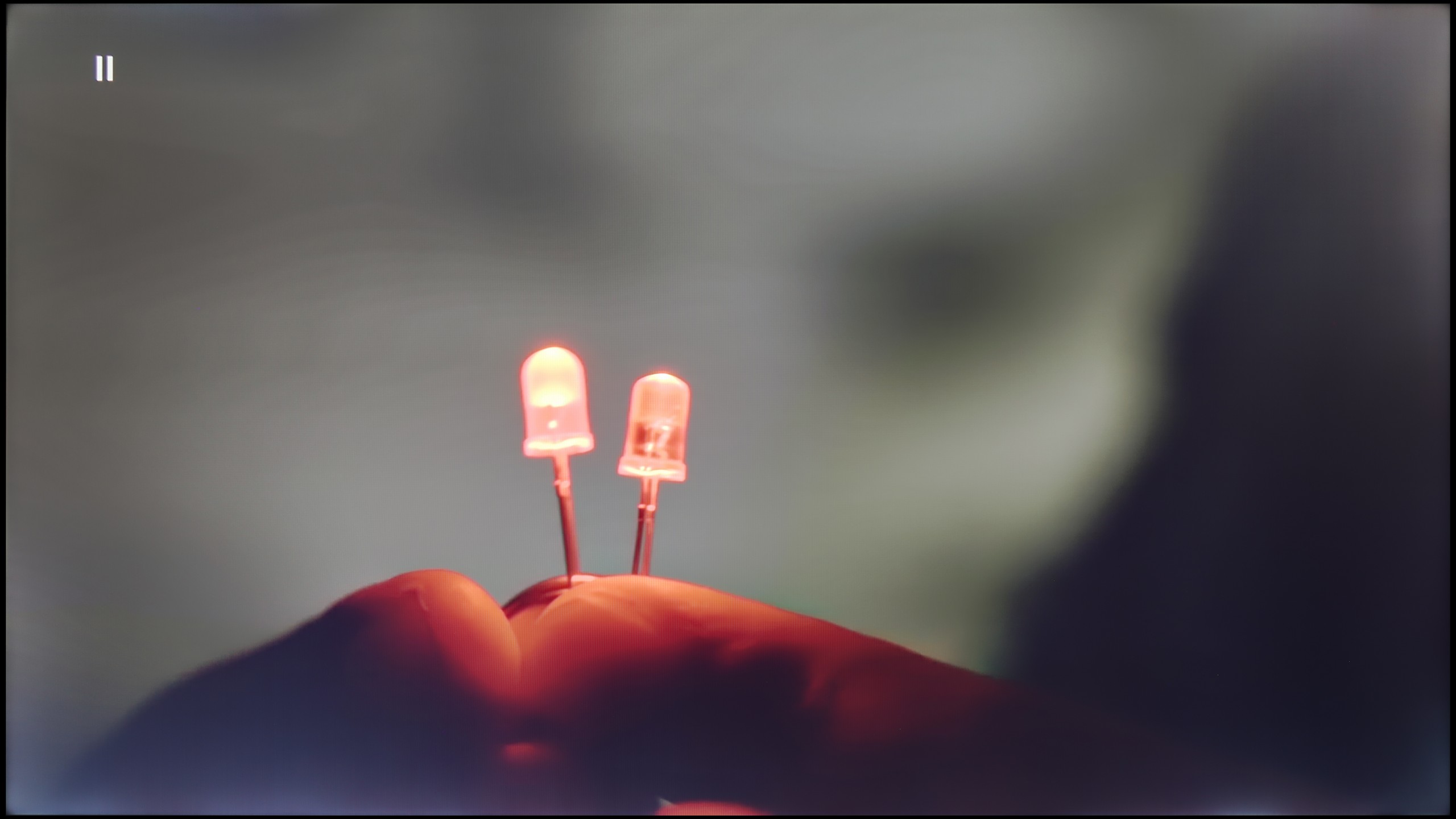
Image without overscan on the SD signal


Let us revisit the topic of tonal transitions, this time in the context of overall image quality enhancement. As shown in the photo on the left, the gradation improvement feature delivers excellent results. It provides multiple settings, each offering noticeable benefits without softening the film grain effect. Once again, it must be emphasised that this feature is the standout advantage of the tested television.
On the other hand, the television’s performance in image scaling leaves much to be desired. Fine details often appear heavily jagged, with a noticeable white halo around figures. Additionally, the significant artificial sharpening detracts from the overall image quality.
When it comes to how the Samsung U8000F handles lower-quality materials, we have to admit that Samsung has made progress compared to its predecessor from last year – the DU7192 model, which theoretically occupies the same place in the lineup.
This year's model is equipped with a function to improve the fluidity of tonal transitions, which has been implemented much better than last year. Yes, the television still uses quite strong algorithms that can distort details or remove film grain, but even so – it can be confidently said that it works effectively.
However, not everything went perfectly. The U8000F has noticeable issues with slight frame cutting when watching very old content in very low resolution. If someone plans to play their old VHS tape, they should be prepared for the image to appear slightly “cut off.”
Blur and motion smoothness
4.2/10
6/10

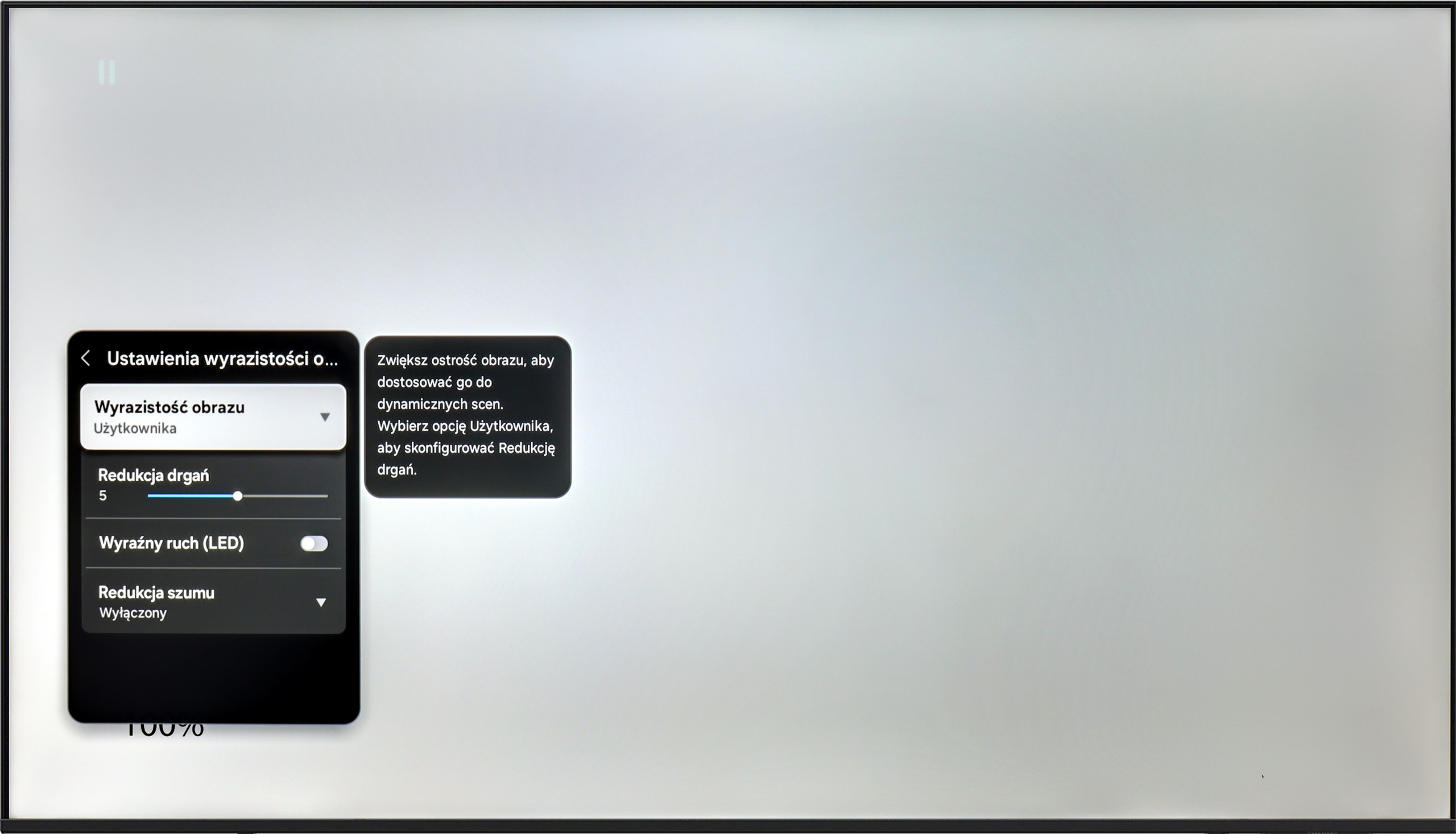
Blur (native resolution, maximum refresh rate):




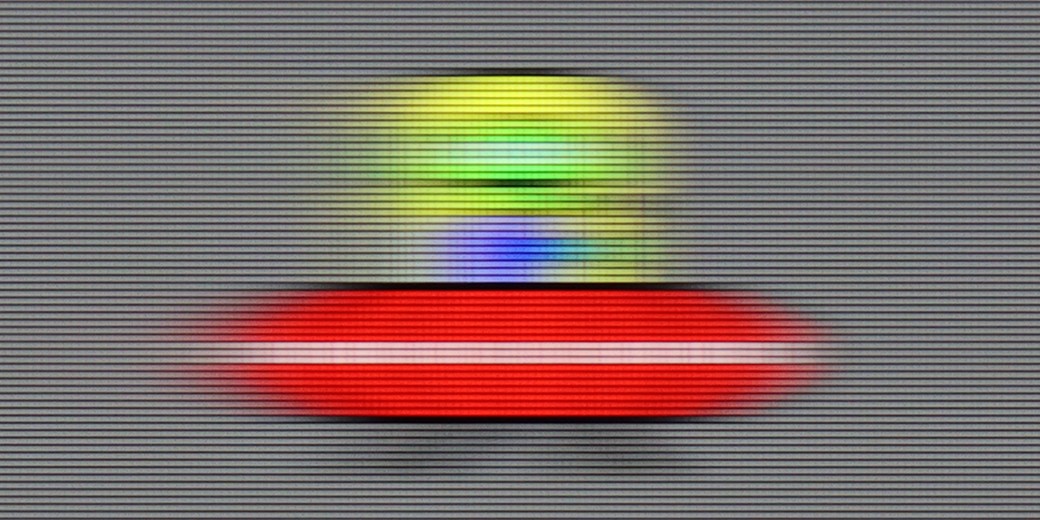

This paragraph will be notably brief due to the absence of even basic motion-smoothing functionality, which is unsurprising given the device's budget-oriented nature. The VA panel used here is not known for exceptional sharpness and is instead associated with high contrast and slower response times, as confirmed by the matrix analysis results. Photos captured during fast motion reveal typical motion blur for this type of panel. While not ideal, the television could be conditionally suitable for watching sports, though viewers should expect less-than-optimal motion clarity. Additionally, films may exhibit noticeable stuttering due to the lack of any motion-smoothing features, even basic ones.
The Samsung U8000F is equipped with a 60 Hz panel, so right from the start, it’s clear that we shouldn’t expect any miracles. This is simply the standard in this class – sufficient for everyday viewing, but without any fireworks.
The TV offers one motion smoothing slider – a feature called "Motion Blur Reduction", which allows us to adjust the smoothness of the image in movies. Higher settings provide a more "theatrical" and smoothed effect, while lower settings help retain the original character of the film with a slight 24p effect. Interestingly, there is a feature called "Clear Motion LED", which is a BFI mode – that inserts black frames between the frames of the picture to improve motion clarity. However, in practice, the screen flickers significantly when activated, and it should be regarded more as an experiment than something that realistically enhances gaming comfort.
Console compatibility and gaming features
4.7/10
4/10
- ALLM
- VRR
- VRR range48 - 60Hz48 - 60Hz
- Dolby Vision Game Mode
- Correct implementation of HGIG
- 1080p@120Hz
- 1440p@120Hz
- 4K@120Hz
- Game bar

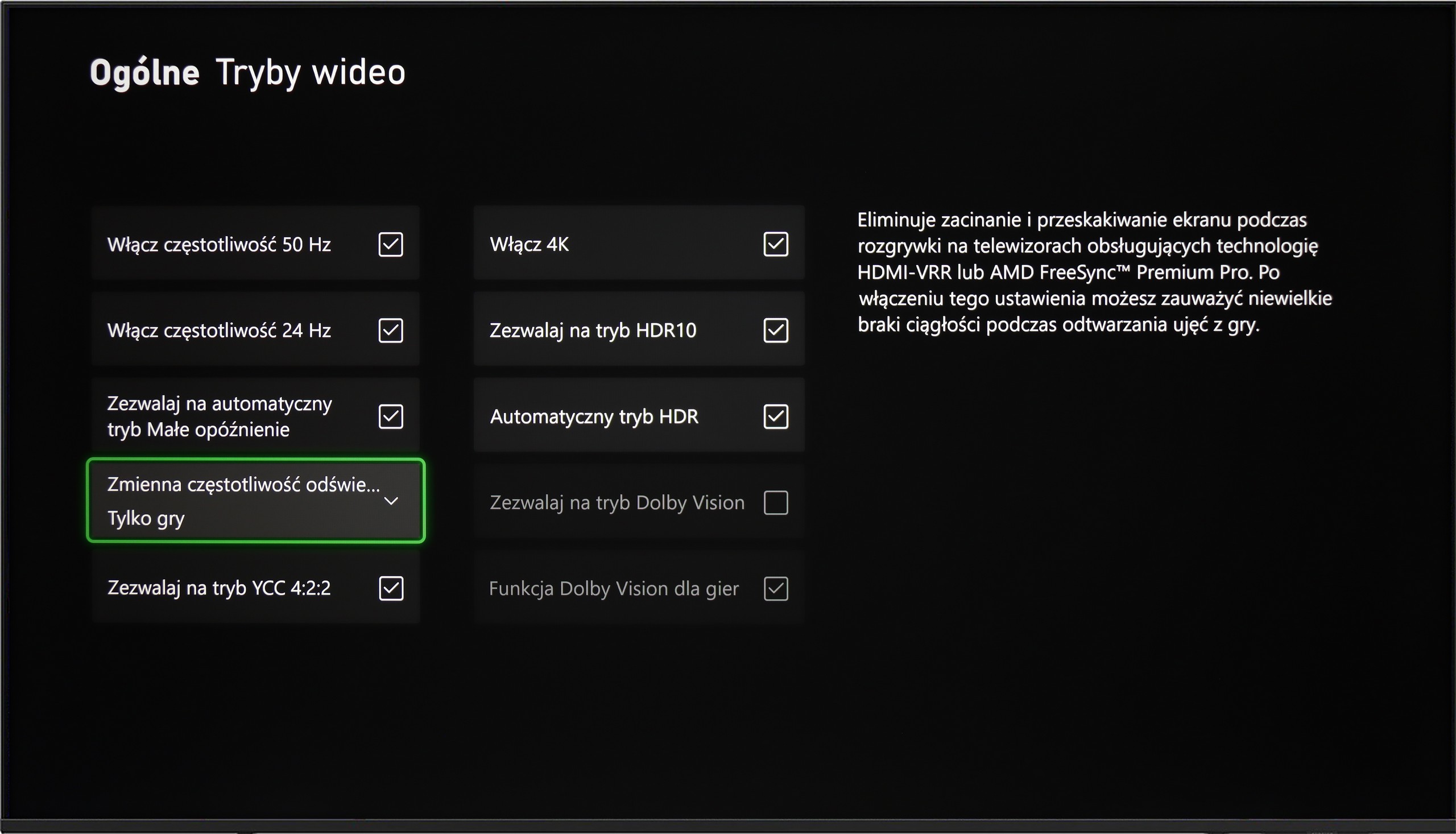



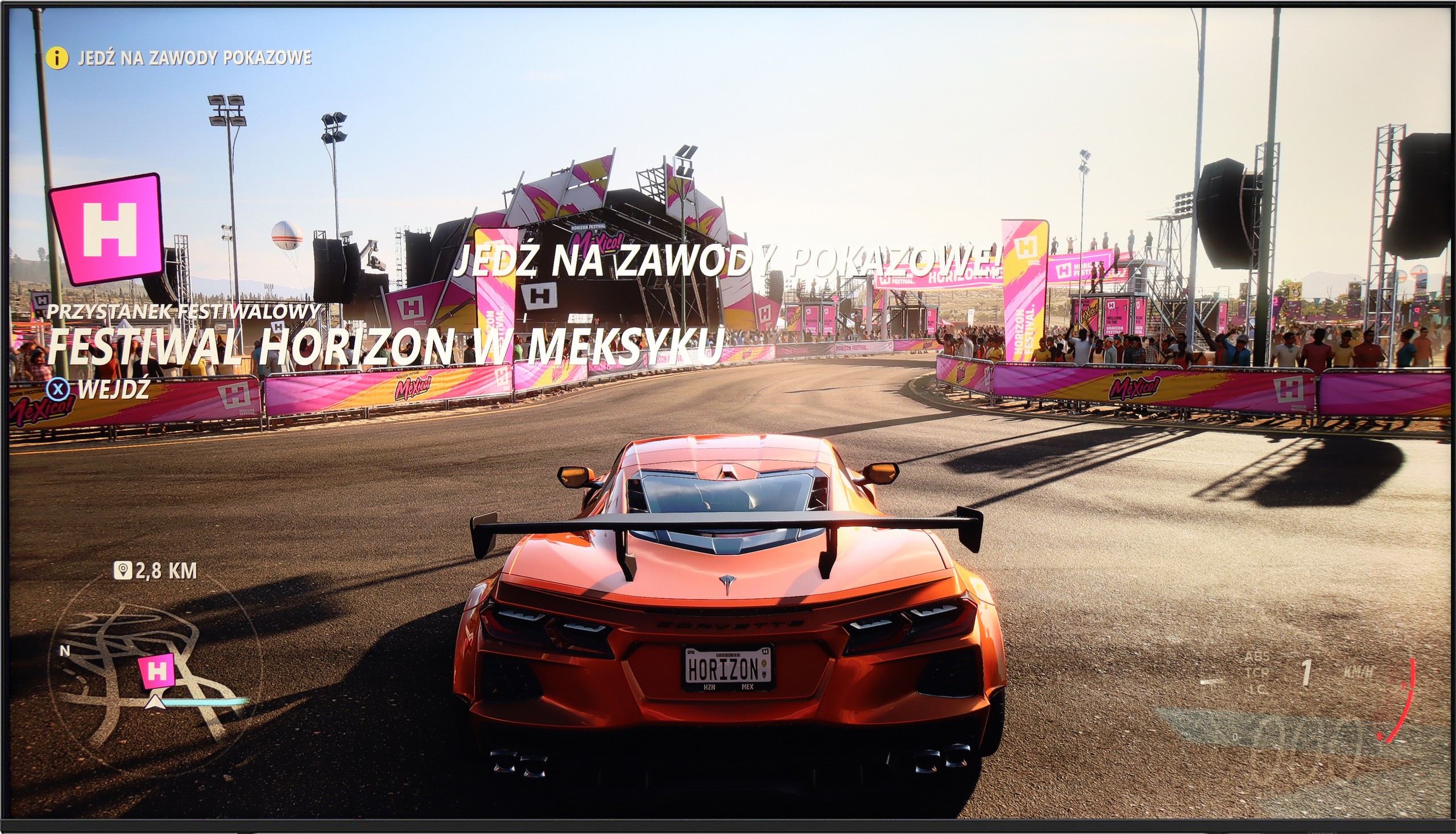


The Philips PUS8079 provides only basic gaming features, including ALLM, VRR, and a Game Bar. The key highlight is the inclusion of dynamic frequency adjustment, which ensures a smooth image with minimal screen tearing—an impressive offering for this price range.
A notable benefit for gamers is the presence of the Game Bar, allowing adjustments to be made "on the fly" without needing to exit the game. Importantly, this feature retains options found in higher-end models, such as shadow enhancement for improved visibility in darker areas and a colour filter designed to assist gamers with visual impairments.
Samsung U8000F offers a basic set of features for gamers, which nonetheless may be sufficient for less demanding users. We have an automatic game mode here – when a game is launched on the console, the TV automatically switches to low latency mode, which significantly improves response time. We also find the VRR feature, or variable refresh rate, which operates within a range of 48 to 60 Hz. This means that both Xbox and PS5 will not produce the "tearing" effect, as long as we stay within this range.
And unfortunately, that's about it for the advantages. Add-ons like Game Bar or higher refresh rates are reserved for the higher models of Samsung from the 2025 line. In theory, the TV also supports the HGiG feature, which should adjust HDR images to the intentions of game developers. Unfortunately – even though this feature appears in promotional brochures and store materials – its configuration on the Xbox console turned out to be... impossible in practice.
Input lag
9.9/10
10/10
SDR
HDR
Dolby Vision
The results of the input lag measurements in PUS8079 are at a high level, regardless of the signal or resolution. All gamers will certainly appreciate the manufacturer's efforts, as a game running at 4K60Hz with HDR will have only 13 ms of latency, which is practically unnoticeable even in online games.
The Samsung U8092F performed phenomenally in our input lag tests. Regardless of the resolution or mode, the results were very low, which is truly impressive for this price range. It can be safely said that gaming on this television will not cause irritation due to significant delays between what we do on the controller and what we see on the screen. For most gamers, even those who are more demanding, this result should be more than satisfactory.
Compatibility with PC
2/10
6/10

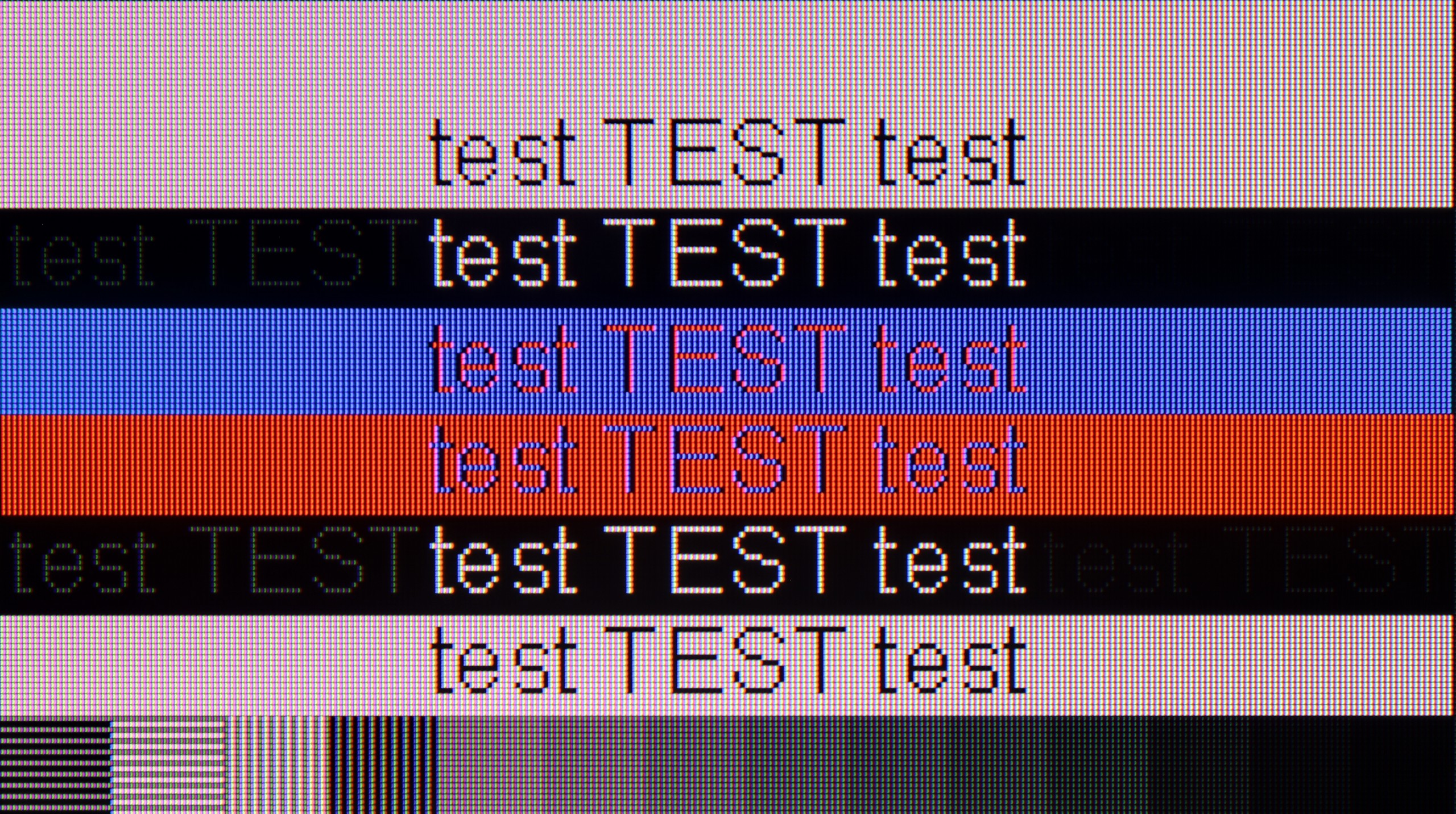
When connecting the Philips PUS8079 to a computer to use it as a monitor, it delivers a low input lag of 14 ms, which is barely noticeable in terms of mouse-screen-eye interaction. However, the television falls short in font clarity, making it unsuitable for use as a monitor. The issue lies in the phenomenon known as dithering, which becomes apparent in the display of grey text. Not all subpixels are lit on adjacent pixels as they should be, resulting in blurry text that severely impacts readability and makes extended work impractical.
Working on a computer using this TV is a real pleasure. The Samsung U8092F supports chroma 4:4:4, and thanks to the layout of the sub-pixels in the IPS panel, text readability – regardless of color or size – is very, very good. The TV is also suitable for occasional gaming on PC, mainly due to its low input lag. However, one must keep in mind that the G-Sync feature does not work on this model, which is strange because VRR worked without any issues when it comes to the console.
Viewing angles
3.8/10
7/10
One of the most notable and frequent drawbacks of VA panels is their limited viewing angles, especially in models without angular coatings that could improve performance in this area. Interestingly, the Philips PUS8079 performed somewhat better in this regard compared to the PML9009 we recently tested. However, even with this slight improvement, a small deviation from the centre still leads to noticeable colour degradation and a significant reduction in contrast.
The viewing angles on the Samsung U8092F are very good – as is expected from an IPS panel. The picture doesn’t lose much in brightness or color saturation, even at greater angles from the axis. Of course, it's not on the level of organic screens – but it’s entirely sufficient for comfortably watching the image at an angle, e.g., from the side of the sofa.
TV efficiency during daytime
2.6/10
3.4/10

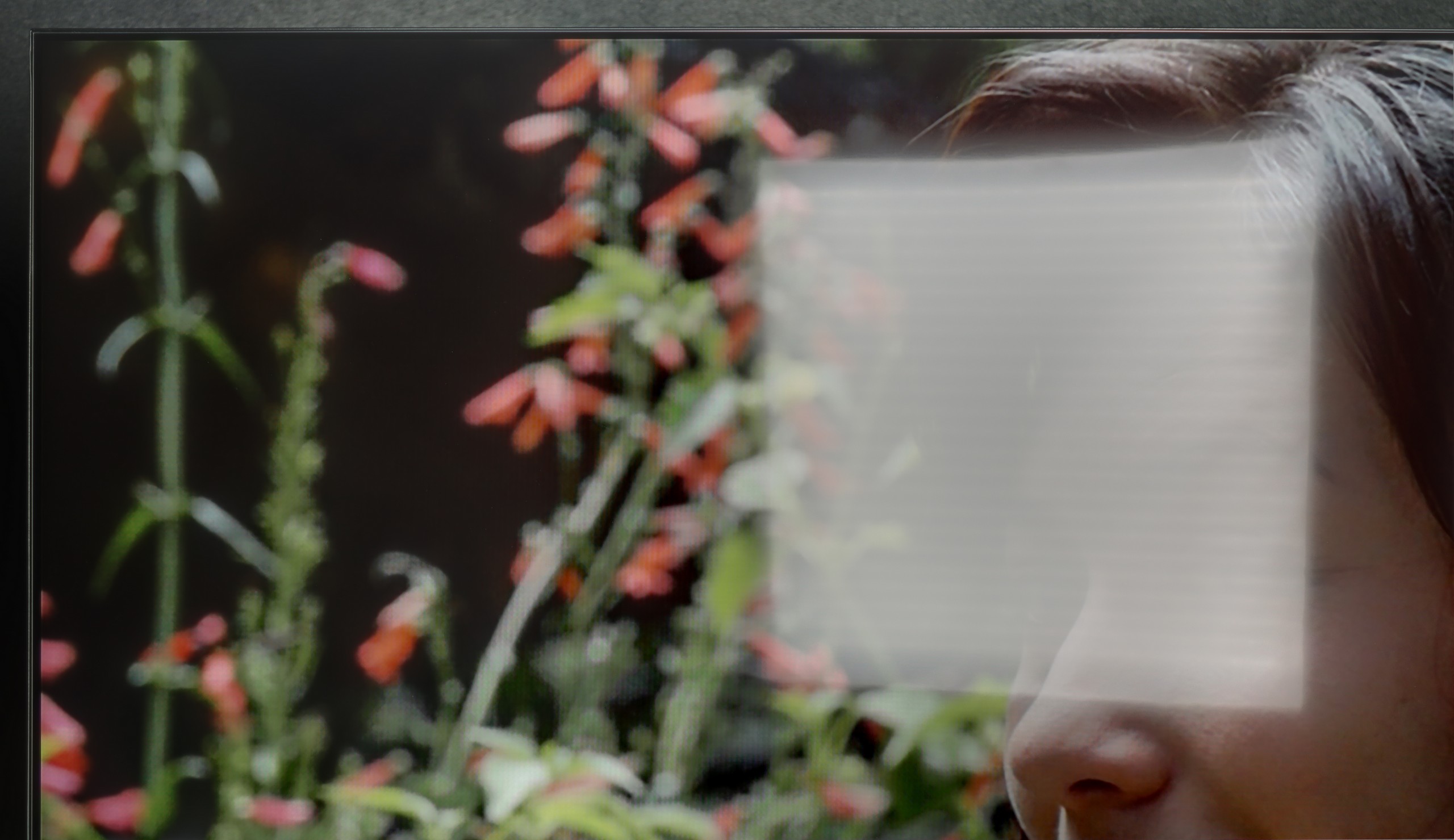

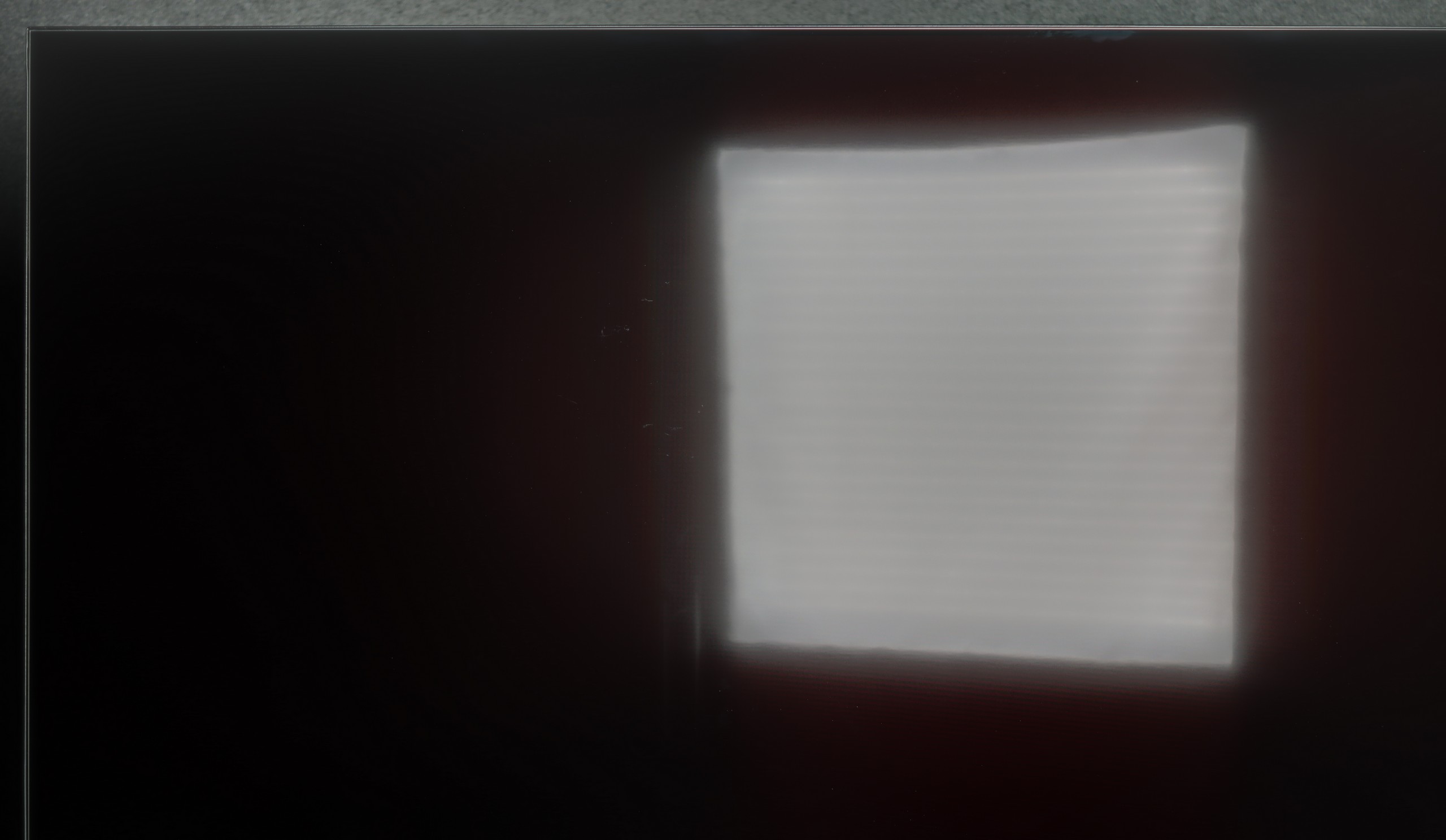
Matrix brightness
Average luminance SDR
Samsung U8000F (IPS): 218 cd/m2
Philips PUS8079: 192 cd/m2
During our test sequence, we also evaluated the television’s performance in daytime viewing conditions, which we recommend given the insufficient contrast for darker environments. Unfortunately, the results were disappointing. The satin coating didn't help much, and combined with the television's low luminance, this effectively rules it out for use in a bright, sunny room.
Thanks to the satin coating of the Samsung U8092F matrix, it handles glare quite well. The screen does not act like a mirror, and the colors – considering the capabilities of this class of devices – remain fairly saturated, even in somewhat brighter conditions. Unfortunately, the coating itself cannot perform miracles. The television is simply too dark to effectively penetrate very challenging lighting conditions. If we place it in front of a light source (e.g., a large window or a strong lamp) – unfortunately, one must consider that not everything will be clearly visible on it.
Details about the matrix
Subpixel Structure:

Panel uniformity:


Philips PUS8079
Samsung U8000F (IPS)
TV features
5/10
5.6/10
- HDMI inputs3 x HDMI 2.0, 0 x HDMI 2.13 x HDMI 2.0, 0 x HDMI 2.1
- OutputseARC (HDMI), ARC (HDMI), Mini-Jack (Headphones)eARC (HDMI), ARC (HDMI)
- Network InterfacesWi-Fi 2.4GHz, Wi-Fi 5GHz, Ethernet (LAN) 100MbpsWi-Fi 2.4GHz, Wi-Fi 5GHz, Ethernet (LAN) 100Mbps
- TV receptionDVB-T, DVB-T2, DVB-S, DVB-S2, DVB-CDVB-T, DVB-T2, DVB-S, DVB-S2, DVB-C
Classic features:
- Recording to USB (terrestrial TV)
- Recording programming
- Picture in Picture (PiP)
- RF remote control (no need to aim at the screen)
- Backlit remote control
- Teletext
- Audio only mode
- Possibility to connect Bluetooth headphones to the TV
- Possibility to simultaneously use Bluetooth headphones and the TV speaker
Smart features:
- AirPlay
- Screen mirroring (Windows Miracast)
- Wyszukiwanie głosowe
- Voice search in native language
- Ability to connect a keyboard and mouse


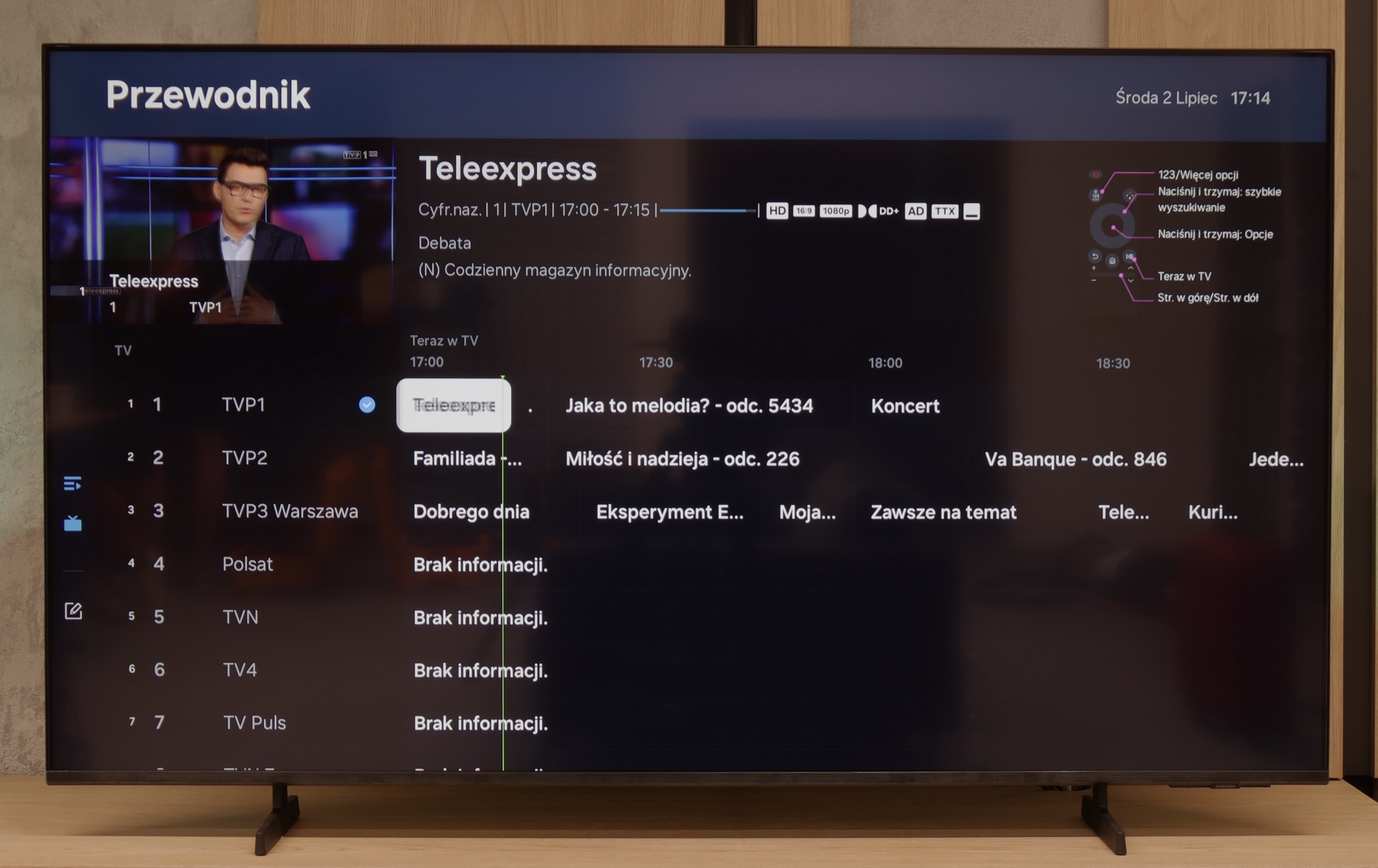

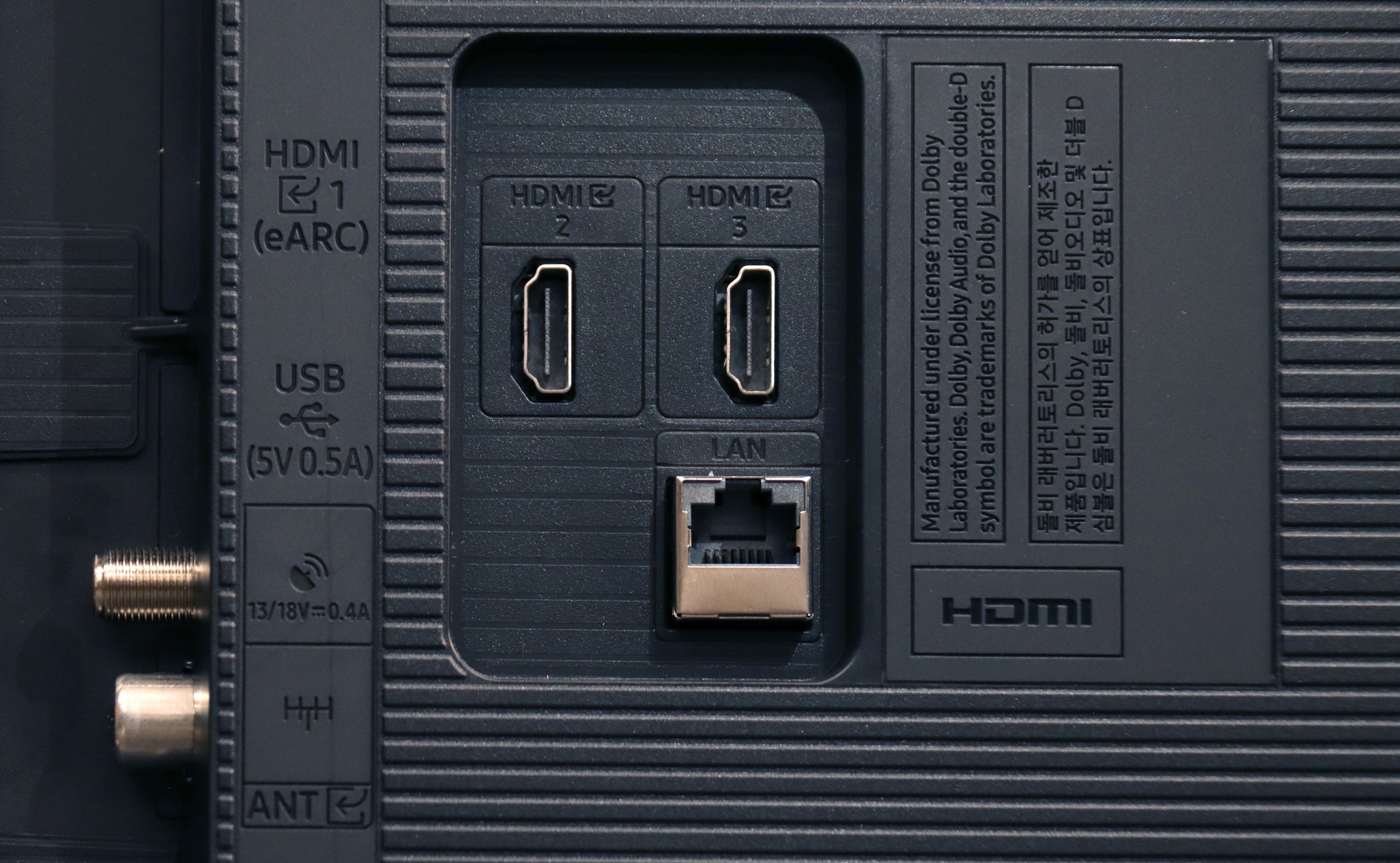
One of the standout features of Philips televisions is, without a doubt, the multicoloured Ambilight backlighting. Positioned on the back of the device, this system displays colours that adjust to what’s happening on screen, creating a more immersive viewing experience. The operating system, TitanOS, powers the television, but it is more closed and limited compared to Google TV-based models from the brand. A significant drawback is the lack of essential apps, such as Apple TV, MAX, Canal+, or Player. Additionally, TitanOS' closed nature restricts basic functions like programming recordings or recording to USB. Apple device users may also be disappointed by the absence of AirPlay, which allows easy screen streaming. On the plus side, it’s possible to connect a keyboard and mouse for smoother navigation through the menu. While headphones can be connected, they must be wired, and sound can also be played through the TV’s speakers. Another inconvenience is that the TV uses IR for control instead of Bluetooth, which feels outdated in today’s tech landscape.
In summary: TitanOs has quite a few "buts," especially for individuals who use many streaming platforms. Instead, it is an option for those who limit themselves to the so-called holy trinity of Netflix, YouTube, and CDA.
Samsung U8092F – like all this year's models from this brand – runs on the Tizen operating system. The system itself is really well developed: we have access to many applications (though not all), a well-developed smart home support, and various add-ons, including exclusive Samsung apps. There are also features like AirPlay or Chromecast, which make it easy to connect a phone to the TV and transfer multimedia.
Unfortunately, since this is Samsung's cheapest series in 2025, the manufacturer did not decide to include a solar remote. In the package, we find a classic infrared remote, which visually resembles a newer version, but unfortunately lacks voice functions. As for typically "TV" features – it lacks recording functions and PiP (picture-in-picture) mode. On the plus side, however, HDMI eARC works well, allowing you to easily control devices from the set such as a decoder or soundbar – and it really works seamlessly.
Playing files from USB
8/10
8.7/10
Supported photo formats:
Maximum photo resolution:

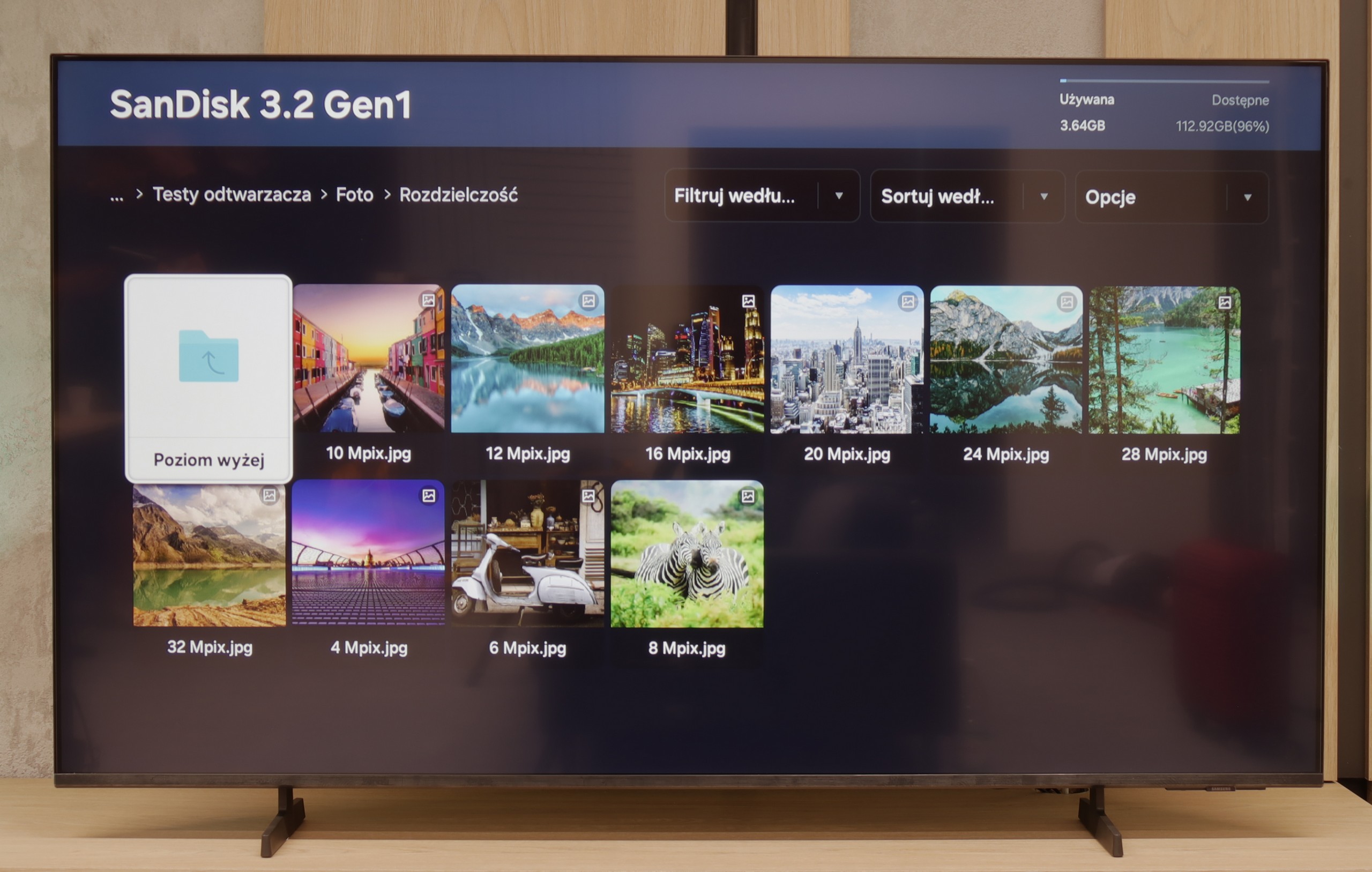
The default media player on the Philips PUS8079 offers a broad range of capabilities but it has some limitations. It supports nearly all video formats, with notable exceptions like Dolby Vision and the less commonly used .asf format. However, it struggles with the H.265 HEVC codec at high bitrates and does not support .sub subtitle files, which are fairly popular. For photos, the player performs reasonably well, but it lacks support for certain resolutions and formats, such as HEIC, which is commonly used by Apple devices. In terms of audio, the player excels and cannot be faulted. Unfortunately, due to system limitations, there is no option to expand its functionality, so users are limited to the features provided by the manufacturer.
Samsung U8092F handles playback of files rather smoothly – the television supports most popular audio and video formats. Of course, it does not support Dolby Vision, but we simply will not find that in any Samsung model.
There may be some reservations regarding the support for external text files – those that the user would like to add as subtitles to a movie. During our tests, the television only played TXT files, and other formats, such as SRT or SUB, unfortunately did not work. This may not be a problem for everyone, but it's worth knowing. Perhaps this is an issue to be improved in the future with an update to the television's operating system.
Apps
7/10
8.3/10














































Sound
5.1/10
5.7/10
- Subjective sound quality:5.1/105.7/10
- Dolby Digital Plus 7.1:
- Dolby True HD 7.1:
- Dolby Atmos in Dolby Digital Plus (JOC):
- Dolby Atmos in Dolby True HD:
- DTS:X in DTS-HD MA:
- DTS-HD Master Audio:
The best thing about the sound system in the Philips PUS8079 is that it is present. Unfortunately, there is virtually no midrange or bass, and the high frequencies are somewhat unpleasant. Interestingly, the television does include a full set of essential audio codecs, including Dolby Atmos and DTS-HD Master Audio, making it easy to connect to a home theatre system.
U8092F doesn't pretend to have a home theater onboard. We get a standard set of 2 x 10 W, which sounds decent, but without much excitement, though with a slight bass. For everyday viewing, this audio setup is completely sufficient. We were pleasantly surprised that it was able to play a movie with the built-in Dolby Atmos codec (JOC) – although, of course, we're not talking about true surround sound here.


